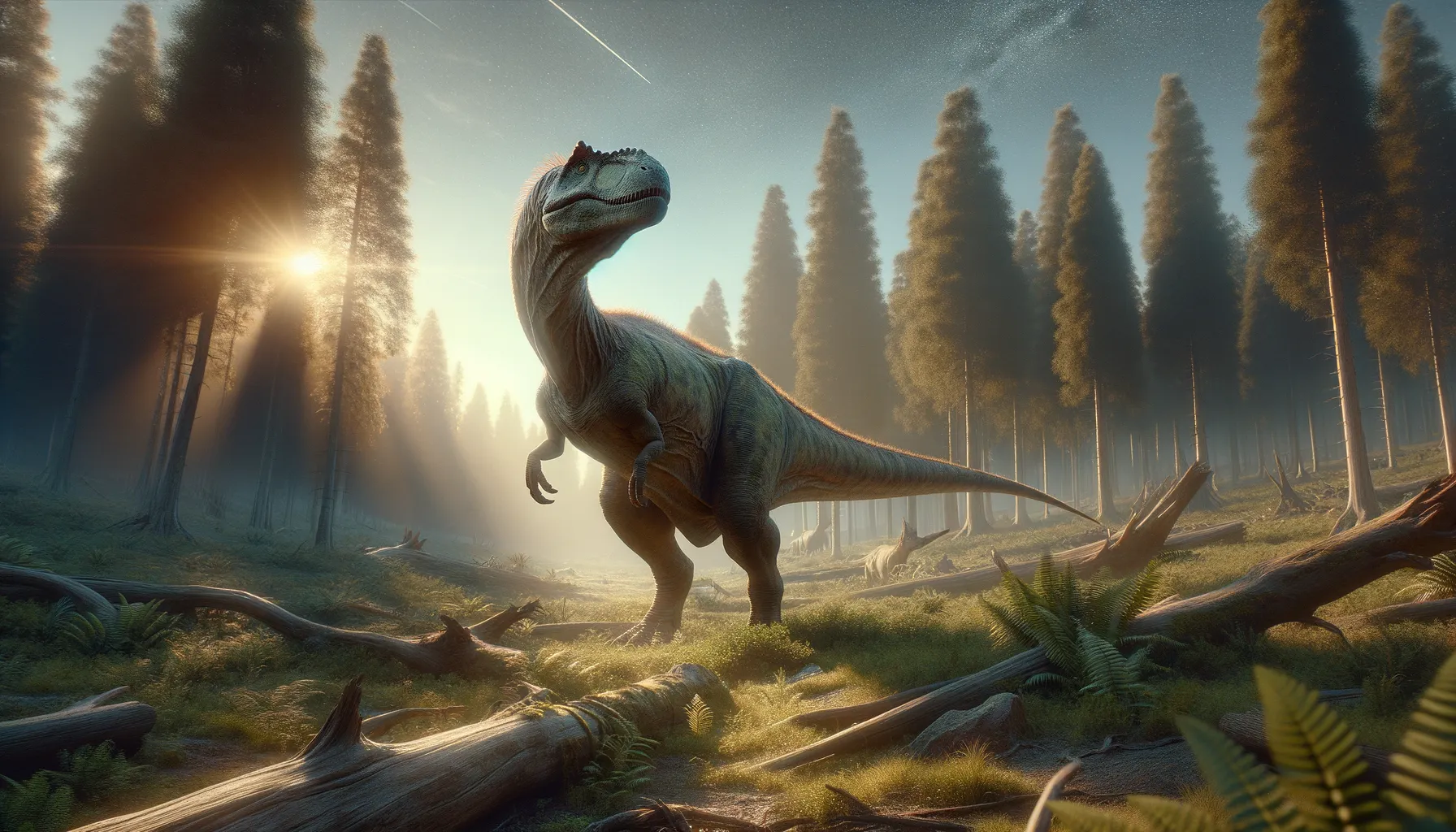
Anchisaurus
An early herbivore on the path to giants.
Period
Jurassic
Length
About 2 to 3 meters in length.
Height
Around 1.2 meters tall at the hip.
Weight
Approximately 60 to 75 kilograms.
Anchisaurus was a small to medium-sized herbivorous dinosaur that lived during the early Jurassic period. Known for its bipedal stance and relatively small size compared to its giant relatives, Anchisaurus was an early sauropodomorph, a precursor to the massive long-necked dinosaurs that dominated later periods. With a lightweight body structure, it thrived in forested and plains environments, feeding on vegetation.
Diet
Anchisaurus was primarily herbivorous, feeding on plants available in its environment. Its diet likely consisted of low-lying vegetation, which it could reach with its moderately long neck.
Hunting
As a herbivore, Anchisaurus did not hunt other animals. Instead, it foraged for plants and possibly small invertebrates, playing an important role in its ecosystem as a plant eater.
Environmental challenges
Living in the early Jurassic, Anchisaurus faced environmental challenges such as fluctuating climates and competition for food resources. These conditions may have driven adaptations in feeding strategies, such as the ability to process a variety of plant materials. Predation from larger carnivorous dinosaurs was likely a threat, influencing its behavior and habitat selection for safety.
Speed
Moderate, likely similar to modern reptiles.
Lifespan
Estimated to live several decades.
First discovery
First discovered in the 19th century in Massachusetts, USA.
Fun Facts
- Anchisaurus lived during the early Jurassic period, around 200 million years ago.
- It was one of the smaller dinosaurs, measuring about 6 to 10 feet long.
- Despite its size, Anchisaurus was an early relative of the much larger sauropods.
- Anchisaurus likely ate plants, making it an herbivore in a time when many dinosaurs were carnivores.
- Fossils of Anchisaurus have been found in North America, primarily in areas like Massachusetts and Connecticut.
- Its name means 'near lizard,' which reflects its transitional features between early reptiles and more advanced dinosaurs.
- Anchisaurus had a long neck which helped it reach vegetation, similar to the more famous long-necked dinosaurs.
Growth and Development
Anchisaurus grew relatively quickly for its size, using available resources efficiently to reach maturity. Fossil evidence suggests it underwent significant growth spurts, a common trait among dinosaurs. Development from hatchling to adult included changes in size and progression to bipedal locomotion.
Habitat
This dinosaur inhabited regions that included lush forests and open plains, providing ample vegetation for its diet. Anchisaurus likely preferred areas with moderate climates and abundant plant life for feeding. Its habitat also offered natural protection from predators, such as dense foliage and varied topography.
Interaction with other species
Anchisaurus interacted with various other species in its ecosystem, including both other herbivorous dinosaurs and predators. These interactions included competition for food and resources with other herbivores. Social behavior may have included forming small groups for safety and mutual support in foraging.
Natural lifespan
Anchisaurus likely had a natural lifespan of up to several decades.
Reproduction
Like many dinosaurs, Anchisaurus reproduced by laying eggs. Nests were likely constructed in sandy or vegetated areas to protect the fragile eggs. Parental care after hatching might have been limited, with young dinosaurs rapidly learning to fend for themselves.
Social behaviour
Anchisaurus might have displayed some level of social interaction, potentially moving in small groups. This social behavior could have been a strategy to increase feeding efficiency and reduce individual predation risk. Its small size compared to larger dinosaurs may have minimized aggression and competition within its species.
Fossil locations
Fossils of Anchisaurus have primarily been found in North America, particularly in states like Massachusetts and Connecticut. These locations provide critical insights into its existence during the early Jurassic period. Fossil evidence from these regions helps paleontologists reconstruct its habitat and lifestyle.
